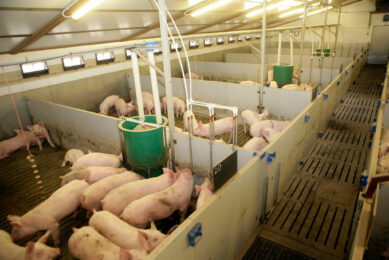Why you should benchmark your pig farm

In this globalised world, information is available everywhere. On the web, there are lists of virtually everything, from hotels to universities – and farming should be no exception. Now how can benchmarking improve farming? Health and nutrition expert Edgar Garcia Manzanilla discusses his recent experience.
Benchmarking has proven to be one of the best tools to improve productivity and sustainability in different sectors. A simple definition of benchmarking would be to improve performance by comparing with peers, learning from others and identifying actions.
In other words, it is just asking yourself: Who is better than me? Why are the others better? How can I catch up with those better than me? In order to do that you need to capture the information you need, which I many cases is available, analyse it, and feed it to the final user in a way that they can use it.
Benchmarking in agriculture, a EU priority
As for other important areas in agriculture, the EU has dedicated an expert focus group to discuss benchmarking, its importance and how it can be further developed in the EU farming sector. The reason is very simple, in a world where the population is growing constantly we need to be as efficient as possible, for our own sustainability. In agriculture, the use of information is variable depending on the product and the level.
Figure 1 – A good example of benchmarking is the international comparison of production costs in the pig industry. Here, the cost of production in selected countries is shown in 2016.

Big pig producing companies, for example, make efficient use of information. However, individual farmers are far from this situation and could benefit much more than they do. Some examples are on its way with the imminent use of PLF in pig farms.
A mechanistic benchmarking in swine production
Often benchmarking of farms is based on productive parameters and helps us rank the farms by performance. Knowing who the best is may help you to know where to look for ideas however we have to understand why they are the best if we want to improve.
Thus in pig farming we need data, other than productive performance, that shows us what makes a farm better than another. Some good example would be the use of scoring systems like the one I recently discussed for biosecurity.
The Irish experience
In our research and advisory group at Teagasc we have recently added to our productive and economic database of pig farms some variables related to management and health including feeding practices, vaccination protocols, use of medication, biosecurity scores, laboratory results and slaughter house information.
We are not the first country that uses this approach and we are far from countries that have been using benchmarking for years, like the Netherlands, but still the results have been surprising for the farmers and for us. The Irish pig sector is small but includes multitude of individual farmers that do not belong to a bigger structure and thus they are relatively isolated.
More opinion pieces: Do your pig farm workers understand you?
This is the perfect environment for benchmarking and we are not the only country in this situation. Benchmarking has helped farmers realise where they stand and has changed in many cases their priorities for their farms. At the same time it has been an excuse to gather for the first time information at a country level including prevalence of some diseases and use of medicines that may result in more efficient policy.
Pathology vs. nutrition
When I was studying in veterinary school I clearly remember the classes of pig nutrition and pig health, each subject claiming to be the most important in pig production for performance. There is no doubt that nutrition is more than 70% of the costs in pig production. However, one of the most interesting results we found in our benchmarking exercise is that feeding practices are not really that related to performance in farms.
In other words, you can have good performance with any feeding system you may choose… liquid vs. dry… pellet vs. meal… purchased vs. home milling… Every farmer finds the way to make its own system works.
However, pathology is a very important determinant in benchmarking positions. In some cases pathology explains up to 50% of the differences between farms. Among those pathologies studied PRRS and enzootic pneumonia where the most relevant ones.
Adapt and survive: also for swine farms
Another interesting observation from our benchmarking has been how small farms are adapting to a more competitive market. Our data includes farms of very different sizes, from very small farms of 150 sows to modern farms with more than 3,000 sows. The size of pig farms keeps increasing to dilute costs and to make production more efficient.
Thus, farms of small size (less than 500 sows) are in a disadvantage when market prices get rough and every crisis reduces the number of such farms. However, a big size has a cost and makes attention to detail more difficult.
More opinions: Tips & tricks for moving pigs around
The small farms still standing show consistently better productive performance than the bigger competitors. The best in health is a small farmer, the best in growth is a small farmer, the best in pigs per sow per year is a small farmer… it may be their only way to survive in the long term.
Unity makes strength in the swine business
One of the most important aspects of the collection and use of data is the word interoperability. It basically means that you should remember that the ability to use the data is an advantage for everybody and creating barriers for its use is to your own detriment. Think, for example, of those systems used by companies selling tractors.
Each one has developed its own unique system for data gathering and analysis. These brand-specific systems are used to keep clients and make a difference with other competitors. However, this is creating barriers in the use of information that make no sense in the globalised world. Remember those days when your DVDs would not work on the other side of the Atlantic? Yes, those days are not that long ago.
Share, use and benchmark pig farm data
Don’t keep your data to yourself. It is not the way the world works nowadays. You need to share it, use it and benchmark your farm. Do it for your units, do it for your staff, do it for your sows, do it for your pigs and you will improve faster.











